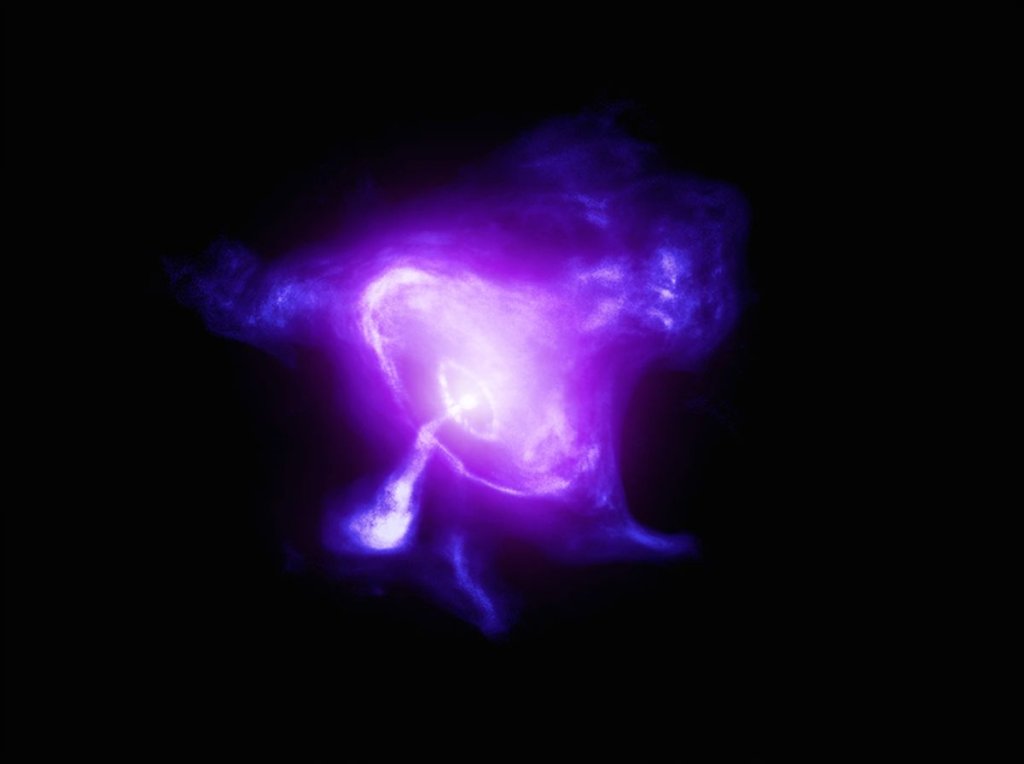Scientists have mapped the iconic Crab Nebula’s magnetic field in greater detail than ever before using NASA’s latest X-ray telescope.
Located 6,500 light-years from Earth, the Crab Nebula is the remnant of a massive stellar explosion, or supernova, that occurred in the year 1054 and left behind a dense object called the Crab Pulsar with a mass about twice that of Earth’s sun. This nebula is one of the most thoroughly studied cosmic objects, but new observations suggest that it’s far more complex than scientists had thought.
Using NASA’s Imaging X-ray Polarimetry Explorer (IXPE) spacecraft, Niccolò Bucciantini at the INAF Arcetri Observatory in Italy and his colleagues were able to trace the Crab Nebula’s magnetic field, revealing unexpected patches and asymmetrical areas of turbulence, according to a statement (opens in new tab) from the space agency.
Related: Supernova photos: Great images of star explosions
“This is a clear indication that even the more complex models developed in the past, with the use of advanced numerical techniques, do not fully capture the complexity of this object,” Bucciantini, lead author of a new study detailing the IXPE observations, said in the statement.
The Crab Pulsar — a spinning neutron star with jets of radiation spewing from its poles — lies at the nebula’s center, surrounded by gas, shock waves, powerful magnetic fields and high-energy light and particles, collectively known as the pulsar wind nebula. NASA’s Earth-orbiting IXPE satellite, which launched on Dec. 9, 2021, has helped to unravel the pulsar’s chaotic surroundings, which were previously not well understood.
The IXPE space telescope is designed to examine the polarization of cosmic X-rays. Polarization measures the direction in which light waves oscillate, which is largely influenced by an object’s magnetic field. Therefore, by measuring the polarization of X-rays from the Crab Nebula, the researchers were able to map the direction of the magnetic field in different parts of the nebula, as well as how ordered the magnetic field is, according to the statement.
Data collected by IXPE shows X-rays originate in the outer magnetic field region, called the “wind” region, and within the magnetic field around the pulsar, from which shocks accelerate particles to near the speed of light. However, further observation is needed to fully understand the origin of these X-rays.
“The Crab is one of the most-studied high-energy astrophysical objects in the sky. So it is extremely exciting that we could learn something new about this system by looking through IXPE’s ‘polarized lenses,'” Michela Negro, co-author of the study and a research scientist at NASA Goddard Space Flight Center, said in the statement.
Their findings were published in the journal Nature Astronomy. You can read the paper for free at the online preprint site arXiv.org (opens in new tab).
Follow Samantha Mathewson @Sam_Ashley13 (opens in new tab). Follow us on Twitter @Spacedotcom (opens in new tab) or on Facebook (opens in new tab).

